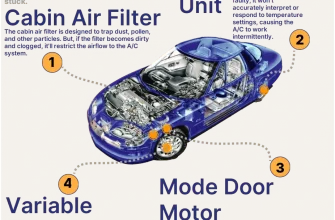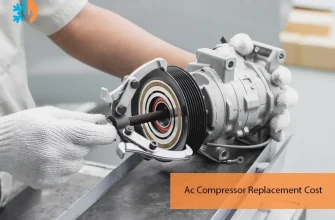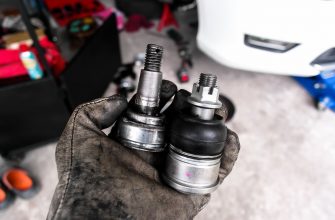When it comes to the intricate machinery of a vehicle, the exhaust system often takes a back seat in our understanding. However, this essential component plays a crucial role in vehicle performance, emissions control, and overall efficiency. In this article, we will delve into the anatomy, function, and importance of exhaust systems in vehicles, shedding light on why they deserve our attention.
- What is an Exhaust System?
- Key Components of an Exhaust System
- How Exhaust Systems Work
- The Importance of a Properly Functioning Exhaust System
- Signs of Exhaust System Problems
- The Evolution of Exhaust Systems
- From Simple Pipes to Complex Systems
- Types of Exhaust Systems
- Maintenance Tips for Your Exhaust System
- The Future of Exhaust Systems
What is an Exhaust System?
An exhaust system is a network of pipes, components, and devices designed to direct and manage the gases produced during the combustion process in an engine. Its primary task is to expel these gases away from the engine and out of the vehicle, ensuring that harmful emissions are minimized and the engine operates efficiently.
Key Components of an Exhaust System
- Exhaust Manifold: This component collects exhaust gases from the engine cylinders and channels them into the exhaust system.
- Catalytic Converter: A critical part of modern exhaust systems, the catalytic converter transforms harmful pollutants into less harmful emissions through a chemical reaction.
- Oxygen Sensors: These sensors monitor the level of oxygen in the exhaust gases, helping the engine control unit (ECU) optimize fuel mixture and reduce emissions.
- Muffler: The muffler reduces the noise produced by the engine’s exhaust gases, providing a quieter driving experience.
- Exhaust Pipes: These pipes transport exhaust gases from the engine to the rear of the vehicle, where they are expelled into the atmosphere.
How Exhaust Systems Work
The journey of exhaust gases begins in the engine, where they are produced as a byproduct of fuel combustion. Once generated, these gases flow through the exhaust manifold and into the catalytic converter. There, they undergo a transformative process that reduces harmful emissions such as carbon monoxide, nitrogen oxides, and hydrocarbons.
After passing through the catalytic converter, the gases continue down the exhaust pipes, where they are further cooled and filtered before reaching the muffler. The muffler’s design is engineered to dissipate sound waves, reducing the noise generated by the engine’s operation. Finally, the gases exit the vehicle through the tailpipe, completing their journey.
The Importance of a Properly Functioning Exhaust System
A well-maintained exhaust system is vital for several reasons:
- Performance: A damaged or clogged exhaust system can lead to decreased engine performance, resulting in reduced power and fuel efficiency.
- Emissions Control: An efficient exhaust system helps minimize harmful emissions, which is crucial for meeting environmental regulations and contributing to cleaner air.
- Sound Control: The muffler plays a key role in controlling the sound of a vehicle, and a malfunctioning muffler can result in an excessively loud and unpleasant driving experience.
- Safety: A leaking exhaust system can allow harmful gases, like carbon monoxide, to enter the vehicle’s cabin, posing a serious health risk to occupants.
Signs of Exhaust System Problems
Understanding the common signs of exhaust system issues can help vehicle owners address problems before they escalate:
- Unusual Noises: Loud or unusual sounds, such as hissing or rumbling, can indicate a problem with the muffler or exhaust pipes.
- Decreased Fuel Efficiency: A drop in fuel efficiency may suggest that the exhaust system is obstructed or malfunctioning.
- Check Engine Light: An illuminated check engine light can signify issues with the exhaust system, particularly with the catalytic converter or oxygen sensors.
- Strong Odors: A strong smell of exhaust fumes inside the cabin is a serious warning sign of a leak.
Understanding the exhaust system in vehicles is essential for maintaining optimal performance, safety, and environmental responsibility. This often-overlooked component plays a pivotal role in how well a vehicle operates and its impact on the environment. Regular maintenance and prompt attention to any signs of trouble can ensure that your exhaust system functions efficiently, helping you enjoy a smoother, quieter ride while contributing to cleaner air.
Next time you rev your engine, remember the critical role your exhaust system plays in making that experience not just powerful, but also responsible.
The Evolution of Exhaust Systems
As automotive technology has advanced, so too have exhaust systems. Initially, these systems were designed primarily for function—merely directing exhaust gases away from the engine and reducing noise. However, with the increasing emphasis on environmental sustainability and fuel efficiency, modern exhaust systems have evolved into sophisticated components that not only serve their original purpose but also enhance the vehicle’s overall performance.
From Simple Pipes to Complex Systems
In the early days of automotive engineering, exhaust systems were simplistic, often constructed from basic metal pipes that served to funnel gases out of the vehicle. As regulations tightened and the understanding of atmospheric chemistry deepened, manufacturers began to incorporate catalytic converters and oxygen sensors. This marked the transition to a more complex exhaust system capable of managing emissions and optimizing fuel usage.
Today’s exhaust systems often feature advanced technologies such as variable exhaust valves and integrated exhaust gas recirculation (EGR) systems. These innovations adjust the flow of exhaust gases based on engine demand, improving efficiency and performance. This transformation reflects a broader trend in the automotive industry—one that marries engineering with environmental consciousness.
Types of Exhaust Systems
Exhaust systems can vary significantly based on the vehicle type, intended use, and regulatory requirements. Here are some common types:
- Single Exhaust System: Most common in standard vehicles, this system uses a single exhaust pipe and is generally adequate for lower performance needs.
- Dual Exhaust System: Often found in performance or luxury vehicles, dual exhaust systems utilize two pipes, allowing for improved exhaust flow and enhanced engine performance.
- Performance Exhaust System: Designed for enthusiasts, these systems are engineered to reduce back pressure and improve engine sound, often featuring high-flow catalytic converters and specialized mufflers.
- Cat-Back Exhaust System: This aftermarket modification replaces the exhaust system from the catalytic converter back, providing enhanced performance and a more aggressive sound.
Maintenance Tips for Your Exhaust System
To ensure your exhaust system remains in optimal condition, regular maintenance is key. Here are some practical tips:
- Regular Inspections: Have your exhaust system checked during routine vehicle maintenance. Look for signs of rust, holes, or loose connections.
- Listen for Sounds: Pay attention to any unusual noises while driving. A loud rumble or hissing could indicate a leak or muffler issue.
- Check for Odors: If you notice a strong exhaust smell inside the cabin, it’s crucial to have the system inspected immediately.
- Monitor Fuel Efficiency: A sudden drop in fuel efficiency can signal exhaust system problems. Keep track of your vehicle’s performance and address any discrepancies.
The Future of Exhaust Systems
As the automotive landscape continues to evolve, so too will exhaust systems. With the rise of electric vehicles (EVs) and hybrid technologies, the traditional exhaust system is facing a transformation. While EVs produce no tailpipe emissions, the need for efficient thermal management systems remains. Future developments may focus on integrating exhaust principles into hybrid powertrains to optimize efficiency.
Moreover, innovations such as active exhaust systems, which can adjust sound and flow based on driving conditions, are becoming more common. These advancements not only enhance vehicle performance but also cater to the growing demand for customizable driving experiences.
Understanding exhaust systems is essential for any vehicle owner. These systems are not just about directing exhaust gases; they play a pivotal role in performance, emissions control, and the driving experience. As technology advances, the future promises even more sophisticated systems that will continue to enhance vehicle efficiency and reduce environmental impact. By staying informed and proactive about maintenance, drivers can ensure their vehicles remain in peak condition, contributing to a cleaner and more efficient automotive landscape.









I found this piece very educational. It’s crucial for everyone to know how their vehicle functions, and this article does just that!
Great insights on how exhaust systems work! The flow of gases and their transformation was explained so well, making it easy to visualize.
Fantastic read! It
This article is a must-read for car enthusiasts! Understanding the exhaust system adds depth to our appreciation for vehicle engineering.
I appreciate how this article emphasizes both performance and environmental impact. It’s a reminder that every part of our vehicles matters!
I loved the breakdown of each component in the exhaust system. The explanations were clear and informative, making it easy to understand their functions.
The details about catalytic converters were particularly interesting. I had no idea they played such a vital role in emissions control.
This article really opened my eyes to the importance of the exhaust system. I never realized how complex and crucial it is for vehicle performance!